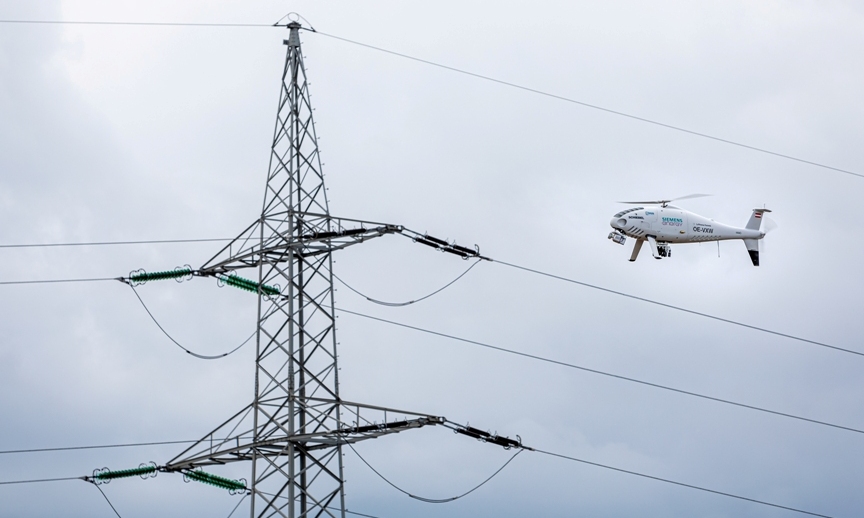German grid operators Schleswig Holstein Netz AG and Bayernwerk Netz GmbH have commissioned Siemens Energy to inspect almost 4,000 km of high-voltage overhead lines.
The inspection will be conducted by a helicopter equipped with a high-tech multi-sensor system using the “SIEAERO” service concept. Developed by Siemens Energy, the system collects all the necessary data during the flight, which can later be evaluated with the help of artificial intelligence and analyzed by other software tools.
In the near future, this kind of holistic inspection of overhead power lines can also be performed with large drones, Siemens Energy said.
SIEAERO
For the inspection, Siemens Energy attaches SIEAERO’s multi-sensor system to the underside of a helicopter. Equipped with 19 cameras and state-of-the-art 3D laser scanning sensors, it captures all relevant inspection data in a single flight over the power line, resulting in up to 12,000 images and detailed 3D data per kilometer of power line.
The SIEAERO’s software, which uses artificial intelligence, can evaluate the images in just a few hours, whereas a human would need a few days.
Optimal use of AI
“The use of artificial intelligence is an important advance in the inspection of power lines. The high data quality makes us more precise and more cost-efficient, and it also allows us to conduct the inspection more safely. What’s more, with conventional measurement and inspection techniques, the lines would have to be flown over several times to get the same results. Each flight saved over the distance of 4,000 km saves 74 tonnes of CO2 emissions. This is another way that we’re making an important contribution to the environment, while supporting our customers to maximize the reliability of the transmission grids,” says Milena Ramos Subires, Vice President Transmission Service at Siemens Energy.
From data mountain to digital twin
Every kilometer of line flown generates 300 gigabytes (GB) of data. The SIEAERO system uses this data to create a digital twin, a highly accurate image of the network infrastructure being inspected, including poles, lines, terrain, and vegetation. With the digital twin, network operators can simulate extreme events like a tree falling on a line and causing it to fail and take the appropriate preventive measures.
Drones could be better
In the future, drones could once again significantly simplify and improve the inspection of power lines. Siemens Energy has already successfully performed several test flights with a drone equipped with the SIEAERO system. Using a drone has a number of advantages: It is more environmentally friendly and quieter than a helicopter, and critical locations could be approached in a more targeted manner.
Currently, however, most countries still prohibit the use of unmanned aerial vehicles beyond the visual range. As soon as the legal situation permits in these countries, Siemens Energy will also offer SIEAERO as a drone service.
Regular checks are essential
Roughly 1.8 million km of power lines run like veins through the German energy infrastructure, ensuring that electricity reaches every socket. The high-voltage lines in the transmission grid are especially important: They ensure that large amounts of electricity can first be transported quickly over long distances to conurbations, and then the electricity can be distributed to consumers via the lower-voltage networks. Regular checks by grid operators of the high-voltage lines – which in Germany extend over some 37,000 km – are essential to ensuring uninterrupted supply of electricity.
Featured photograph (source: Siemens Energy) shows the deployment of a drone by Siemens Energy for inspection of overhead power transmission lines.



